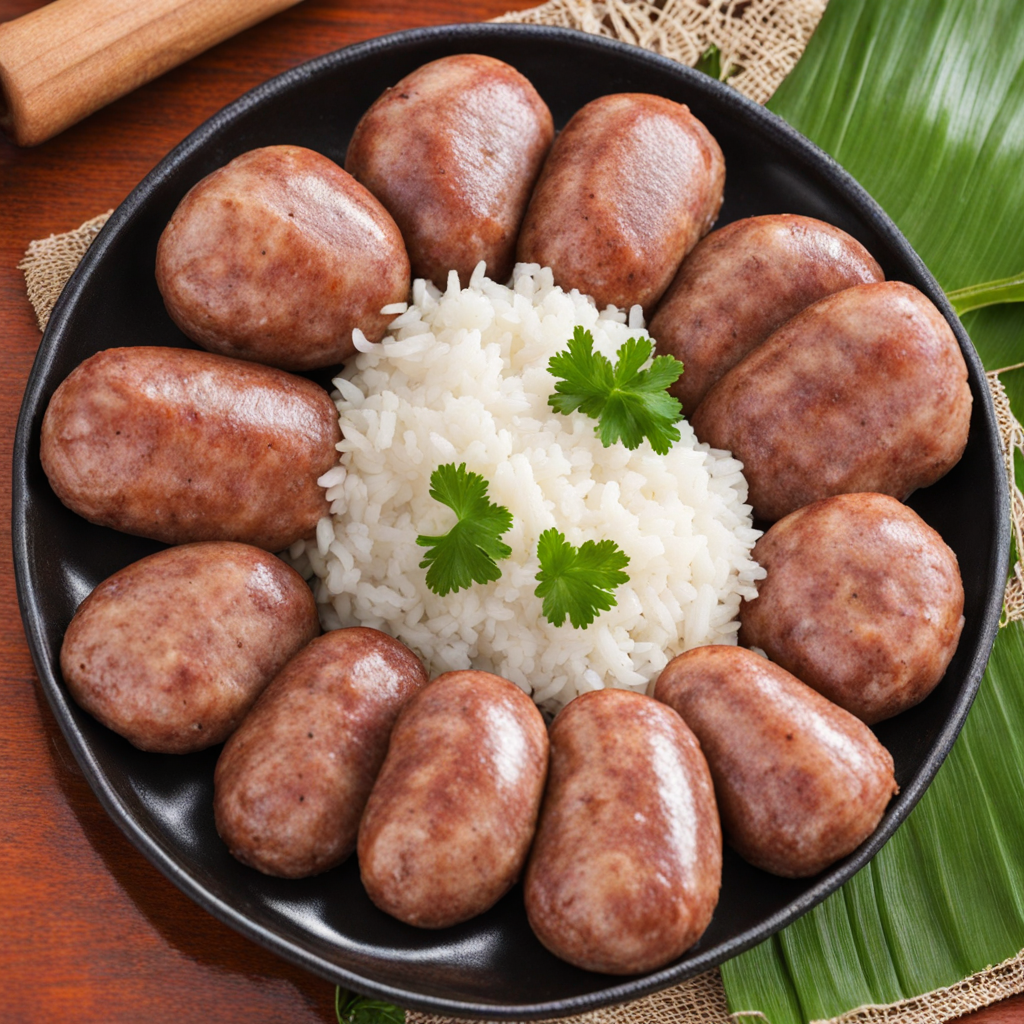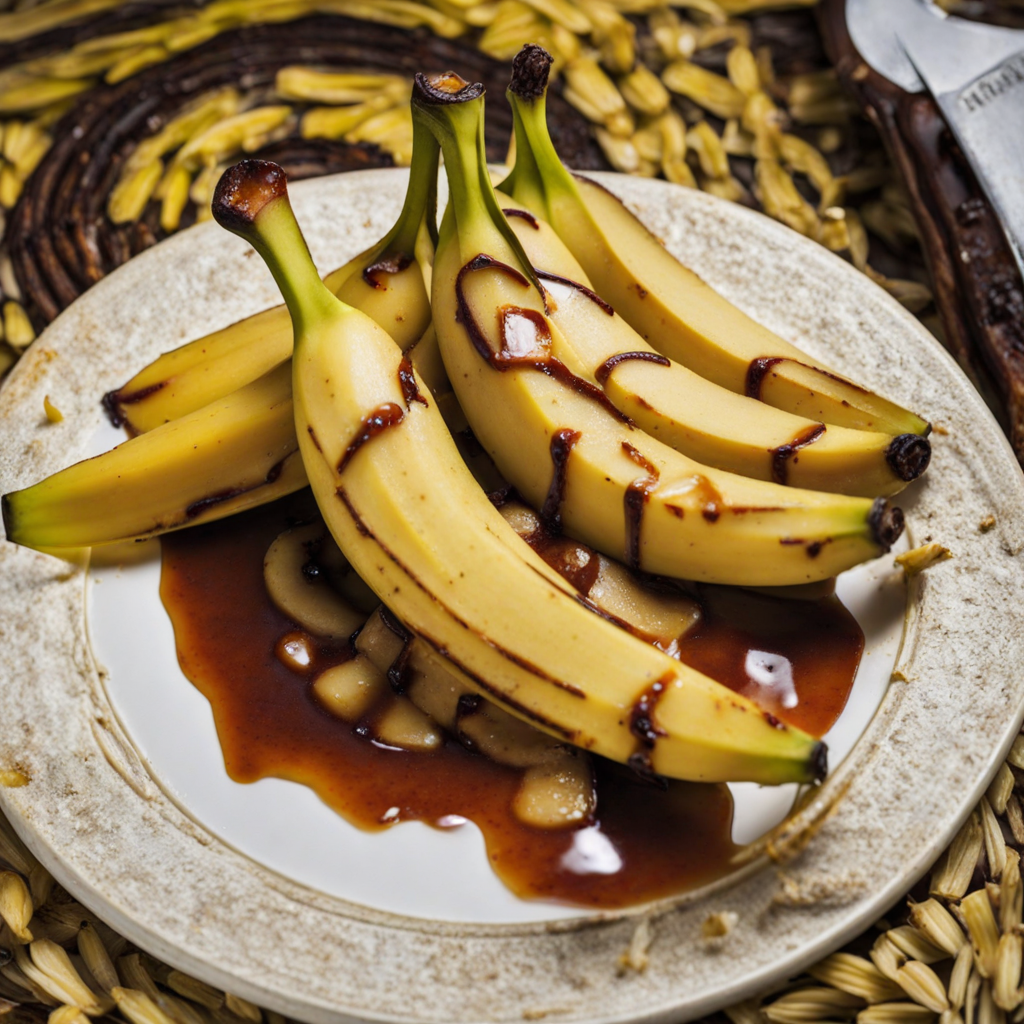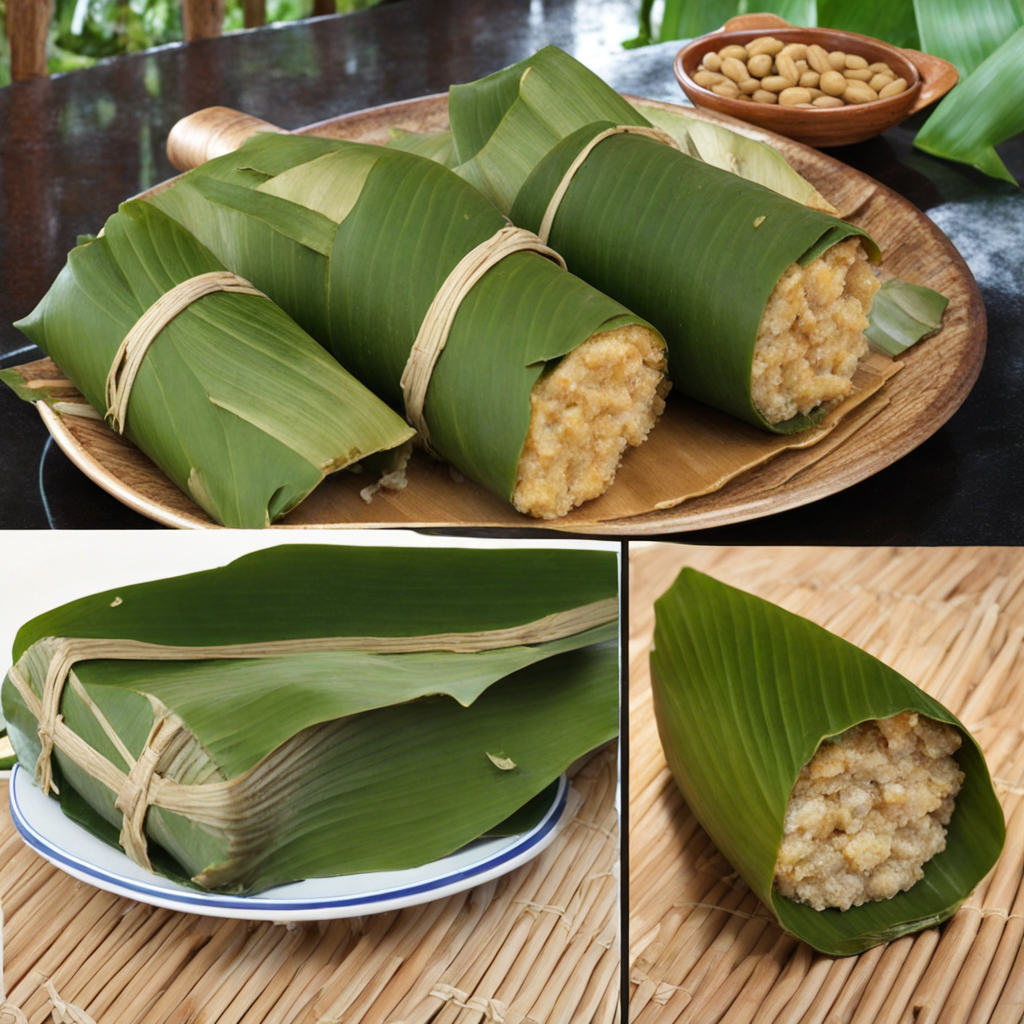Saosisy
Saosisy is a delightful culinary treasure from Madagascar, characterized by its unique blend of flavors and textures that reflect the island's rich cultural heritage. This dish typically features a base of succulent meat, often pork or chicken, marinated in a mix of local spices, herbs, and sometimes a touch of citrus to enhance its natural flavors. The meat is then slow-cooked or grilled to achieve a tender, juicy result, infused with the aromatic essence of Madagascar's diverse flora. The combination of sweet and savory notes creates a deliciously complex palate that is sure to intrigue adventurous eaters. Accompanying the marinated meat, Saosisy often includes a medley of colorful vegetables, such as bell peppers, onions, and tomatoes, sautéed to perfection. These veggies not only add a vibrant pop of color to the dish but also contribute a refreshing crunch that complements the richness of the meat. To elevate the experience further, many variations of Saosisy are served with a side of fragrant rice or a traditional Malagasy staple known as "mofo," which are small, savory rice cakes that soak up the flavors beautifully. The beauty of Saosisy lies in its versatility, as it can be tailored to suit different tastes and dietary preferences. Whether enjoyed at a festive gathering or a casual meal with family, this dish embodies the spirit of Malagasy cuisine—simple yet deeply flavorful, with a touch of warmth and hospitality. Each bite serves as an invitation to explore the enchanting flavors of Madagascar, making Saosisy a must-try for anyone looking to expand their culinary horizons.
How It Became This Dish
Saosisy: A Culinary Journey Through Madagascar Origins Saosisy, a savory Malagasy sausage, is a dish that encapsulates the culinary diversity of Madagascar, an island nation off the southeast coast of Africa. The origins of Saosisy can be traced back to the early settlers of the island, who brought with them a myriad of culinary traditions influenced by their ancestral homelands. The ancestors of the Malagasy people are believed to have arrived from Southeast Asia, particularly Indonesia, around 2000 years ago. These early inhabitants introduced rice cultivation and various spices, which laid the foundation for the island’s unique gastronomy. As trade routes expanded, Madagascar became a melting pot of cultures, absorbing flavors and techniques from the Arab traders, the French colonizers, and neighboring African nations. Saosisy, while primarily a product of local resources and culinary practices, reflects this rich tapestry of influences. The use of pork, which is predominant in Saosisy, can be attributed to the introduction of domesticated pigs by the Arabs, while the incorporation of spices such as garlic, ginger, and pepper showcases the island's trade interactions. Cultural Significance The significance of Saosisy goes beyond mere sustenance; it is woven into the fabric of Malagasy identity and social culture. In Madagascar, food is more than just a necessity; it is a symbol of community, tradition, and celebration. Saosisy is often served at gatherings, festivals, and family celebrations, where it embodies the spirit of togetherness and hospitality. The preparation of Saosisy is typically a communal activity, where families come together to mix the meat with spices, stuff it into casings, and share in the labor of love. Madagascar’s unique cultural practices also intertwine with the preparation and consumption of Saosisy. For instance, the dish is sometimes served on special occasions such as weddings or during the celebration of the “Famadihana,” a traditional Malagasy ceremony that honors ancestors. During Famadihana, families dig up the remains of their ancestors, wrap them in fresh shrouds, and celebrate their memory with music, dance, and food, including Saosisy. This connection to ancestry emphasizes the dish's role in maintaining cultural heritage and continuity. Development Over Time As Madagascar moved through the epochs of colonial rule and independence, the culinary landscape, including Saosisy, continued to evolve. During the French colonial era in the late 19th and early 20th centuries, French culinary techniques and flavors permeated Malagasy cooking. Saosisy began to adopt elements from French charcuterie, leading to the creation of various regional adaptations of the dish. The introduction of new ingredients, such as herbs and spices from Europe, influenced the flavor profile of Saosisy, making it more complex and refined. In contemporary Madagascar, Saosisy has seen a resurgence in popularity, both within the country and among the Malagasy diaspora around the world. With globalization and the rise of food tourism, there has been a renewed interest in traditional Malagasy cuisine. Chefs and home cooks are experimenting with Saosisy, creating fusion versions that incorporate international flavors while retaining the essence of the traditional recipe. This development has sparked a culinary renaissance, with Saosisy being showcased in restaurants and food festivals, allowing it to reach a broader audience. The rise of social media has also played a role in promoting Saosisy beyond Madagascar’s borders. Food bloggers and influencers have captured the vibrant process of making Saosisy, sharing it with a global audience. This visibility has not only celebrated Malagasy culture but has also led to an increased awareness of the importance of preserving traditional recipes in the face of globalization. Saosisy Today In the modern context, Saosisy is often prepared in various forms and flavors, reflecting regional preferences and available ingredients. While the foundational recipe usually features ground pork mixed with garlic, ginger, and various spices, variations abound. Some cooks may incorporate local ingredients such as voanio (coconut) or incorporate different meats, like chicken or beef, appealing to diverse palates. Saosisy is usually served grilled or fried, and it can be enjoyed on its own or as part of a larger meal featuring rice, vegetables, and salads. Street vendors in Madagascar often sell Saosisy as a quick snack or meal option, showcasing its versatility and accessibility. The dish is typically accompanied by a tangy sauce or chutney made from local fruits and spices, adding an extra layer of flavor that enhances the overall experience. Conclusion Saosisy is more than just a sausage; it is a culinary representation of Madagascar’s rich history, culture, and tradition. From its ancient roots to its modern adaptations, this beloved dish embodies the resilience and creativity of the Malagasy people. As Madagascar continues to navigate the complexities of modernity while honoring its past, Saosisy stands as a symbol of cultural pride, community, and the enduring power of food to bring people together. In a world increasingly driven by fast food and convenience, the story of Saosisy reminds us of the importance of tradition, the celebration of heritage, and the joy of sharing a meal with loved ones. Whether enjoyed in a bustling market in Antananarivo or served at a family gathering, Saosisy will forever hold a special place in the heart of Malagasy cuisine, inviting all who partake to savor the rich flavors and stories that it carries.
You may like
Discover local flavors from Madagascar







